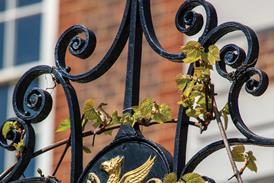In South Africa, the political classes are mobilising for an April election. The frontrunner, Jacob Zuma, is beset by allegations of corruption, which he contests, while critics of his party, the ruling African National Congress, fear a wave of nationalisations in agriculture, mining and industry. Driving out of Cape Town along the M7, past the sprawling Khayelitsha township, the air is filled with tension. For the Rainbow Nation, the political and economic future is uncertain.
It is against this background that the South African wine industry celebrated a landmark birthday on 2 February – 350 years since the first vintage was produced on the Western Cape. It has a lot to celebrate. While the fortunes of the country are less certain, South Africa’s wine industry is hitting its stride, producing arguably the best wine it has ever made.
Last year I visited the Cape twice. In March I shadowed Frans Smit, head winemaker at Stellenbosch’s Spier estate, while he and his team orchestrated the 2008 vintage. One night at a particularly raucous winemaker’s dinner they produced a red wine for me to assess blind. Fortunately I managed to deduce the blend and a rough age. But when it came to geographical location I was hopelessly at sea. Impressed with its refined, earthy, Bordeaux-style characteristics of cedar, cigar box and blackcurrants I placed it as a top end Médoc. My hosts were delighted. It was in fact Kanonkop’s 1997 Paul Sauer Bordeaux blend from a few miles up the road. Their winemaker, Abrie Beeslaar, has just been named the International Winemaker of the Year at the International Wine and Spirits Competition – judging by his cabernet sauvignon and Paul Sauer blend it is not hard to see why. His wines have a stunning, delicate character with fine tannins, dark fruit and a long, complex finish.
In my opinion, cabernet sauvignon blends are now South Africa’s outstanding variety, offering claret lovers the same expression of terroir, acidity and finesse found in Bordeaux for a fraction of the price. Rustenburg’s John X Merriman and Peter Barlow blends, and Vergelegen’s Mill Race and straight cabernet sauvignon are also outstanding. It is no underestimation to put some of the past vintages on a par with anything produced in Bordeaux.
This should not come as too much of a surprise – although we often regard South Africa as a New World wine-producing country, the Cape actually possesses some of the oldest geology in the wine-growing world, with three centuries of viniculture lineage. But perhaps more than any other wine region, the fate of South Africa’s vinelands has been inextricably bound with the politics and history of its nation, and for many years they have not been on its side. By the end of the 19th century the collapse of the British market after the Anglo-Boer War brought many hardships to South African winemakers. Tales of British atrocities towards the Afrikaans community during that time make for sobering reading.
But what pulls me to the spectacular, lush green valleys and jagged, granite mountain ranges of the Cape vinelands is the uniquely Old World philosophy found in many of the Cape’s most sought-after wine estates. This can be summed up in one word: subtlety. For white wine this means not overdoing the oak, producing less wild, tropical flavours that scream out of the glass and opting for more mineral, understated, dry flavours. With the reds, again it means using wood as a platform, not as an end in itself.
Sauvignon blanc is also in vogue in the Cape at the moment, with estates such as Buitenverwachting, Klein Constantia, Rustenberg and Vergelegen all producing a restrained, mineral, zippy character with just a hint of gooseberry and pear. These are distinctly Old World in style and would not look out of place in a Loire Valley tasting.
In Hermanus, where the whales frolic in the sea, Anthony Hamilton Russell has created an estate with a distinctly Burgundian feel. More importantly, these sell at around £25 a bottle – by no means cheap, but compared with their counterparts in the Cotes de Nuits, they are trading at a near 50% discount.
With the help of his winemaker Hannes Storm and viticulturist Johan Montgomery, Russell produces silky, elegant, sophisticated wines. The chardonnay has a tight, mineral character with a nutty, creamy nose and an intense flickering acidity. The pinot noir is sensational, with notes of dark cherry, black spice and an earthy savoury character. The good news is, with 350 years on the clock, the best is still to come.
Will Lyons is wine correspondent for Scotland on Sunday newspaper



























No comments yet